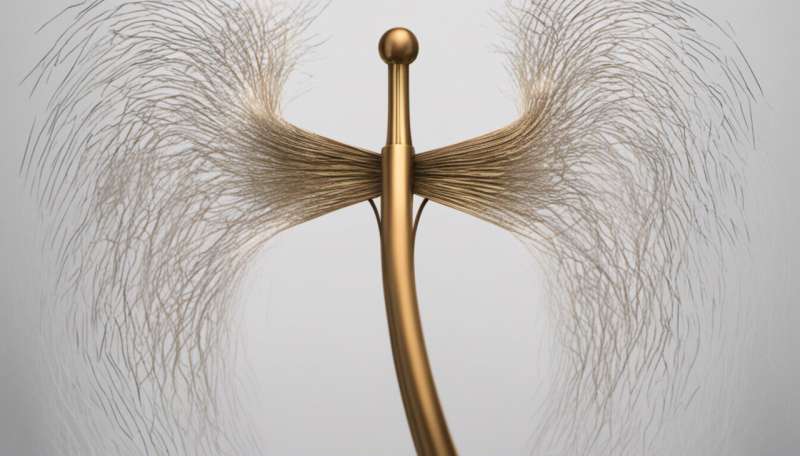Measuring the effect of gender-based aid

Increasing women's participation in politics has been one of the biggest focus areas in Norwegian gender-based aid in recent years. In a number of countries in Africa, more than 30 per cent of the members of parliament are women; a goal set by the UN women's conference in Beijing in 1995. In the research project Engineering gender equality: The effects of aid on women's political representation in Malawi, Sudan, Uganda and Zambia, the researchers will look at where, when and how gender-based aid is most effective. The project is headed by senior researcher Liv Tønnessen at Chr. Michelsen Institute (CMI) in Bergen. The project has been supported with NOK 5 million from the Research Council of Norway. CMI is collaborating with the University of Bergen and with researchers from Afhad University for Women in Sudan, Chancellor College in Malawi, Makerere University in Uganda and Centre for Policy Dialogue in Zambia. The project started in 2014 and will run over three years.
Representation
There are a number of dimensions to women's representation in political bodies. Descriptive representation is used about how many women are elected to parliament. If this representation leads women to act on behalf of women's interests, the term substantial representation is used. But what about people's attitudes to female politicians? The term symbolic representation is used when there is a positive change in ordinary people's perception of women in politics.
'From 2007, we have seen a huge increase in Norwegian aid to promote women's political representation. This aid is built on the theory of change that an increase in the number of women in politics also leads to women-friendly policies and a change in attitudes. One of the goals of the project is to see if this is the case,' says Tønnessen.
Quotas
There has been an incredible increase in the number of women in African parliaments, not least because of quota schemes. This trend has enjoyed significant support from international players.
'Women's representation is higher in countries that have experienced conflict, because the post-conflict phase provides increased space for political action for new players. In addition, UN Security Council Resolution 1325["Women, peace and security"] facilitated an increase in women's representation in political decision-making processes in countries that have been exposed to conflict. An impressive 64 per cent of Rwanda's national assembly are women,' says Tønnessen.
However, quotas do not automatically lead to recognition and influence. In Uganda, researchers Name recognition is interpreted as respect for fellow representatives, and gives an indication of the representative's potential power and authority.
'Our figures show that quota women receive less recognition than women and men elected without the help of quotas. These are important findings in helping us to understand the significance and effect of gender quotas, as many African countries are introducing such systems, 'says postdoctoral researcher in the project, Vibeke Wang.
'We have seen an alternative to the quota system in Malawi, where the international community, spearheaded by Norway, has given financial support to women standing for election,' says Tønnessen.
Time-consuming process
Substantial representation of women can lead to more women-friendly laws and decisions, but this is not always the case.
'It's a long process. An election today does not bring about new laws tomorrow,' says Tønnessen.
Sudan reserved seats for women in its national assembly in 2008, but this has not yet resulted in women-friendly laws. The president stopped a draft bill to criminalize female genital mutilation on religious grounds. However, female politicians and activists have not given up and are still fighting to criminalize the practice. In Uganda, the research findings show that female legislators represent women's interests to a great extent. The country has had reserved seats for women in the parliament since 1989.
'However, it was not until the period from 2006 to 2009 that we started to see results. A new law was passed in 2010, for example, relating to domestic violence,' says Wang.
Symbolic representation
In Malawi, the project team is planning to carry out an extensive survey to map people's attitudes to women in politics. They will be using experimental survey as the method.
'As far as we know, this methodical approach has not been used before to study symbolic representation in Africa. We will ask two representative samples the same questions, but with a discrete gender difference in the wording of the questions,' says Tønnessen referring to the following example concerning support for the criminalisation of child marriage – a topic that has been high on the country's political agenda.
'Half of the respondents will be asked whether they support the proposal to criminalise child marriage as proposed by a female politician. The others will be asked the exact same question, this time however proposed by a male politician. This enables us to identify the differences in attitudes to male and female politicians,' says Tønnessen.
Aid
Little research has been done on the role of aid in promoting women's political participation. Earlier studies in Africa have mainly looked at countries with strong women's movements and female representation in parliament of over 30 per cent.
'Countries with few women in politics and weak women's movements have been included in the project to generate new knowledge about substantial representation. It will be particularly interesting to see if aid has an effect in these contexts,' says Tønnessen.
'What roles do aid and outside influences play?'
'CEDAW, The UN Convention on the Elimination of All Forms of Discrimination against Women, Resolution 1325 and other international norms are actively used to frame local demands. International aid actors play an important role in applying pressure, but they also fund and support campaigns for women's rights. Aid can play an important role if and when local rights claims converge with the agenda of international actors,' says Tønnessen.
Provided by The Research Council of Norway


















